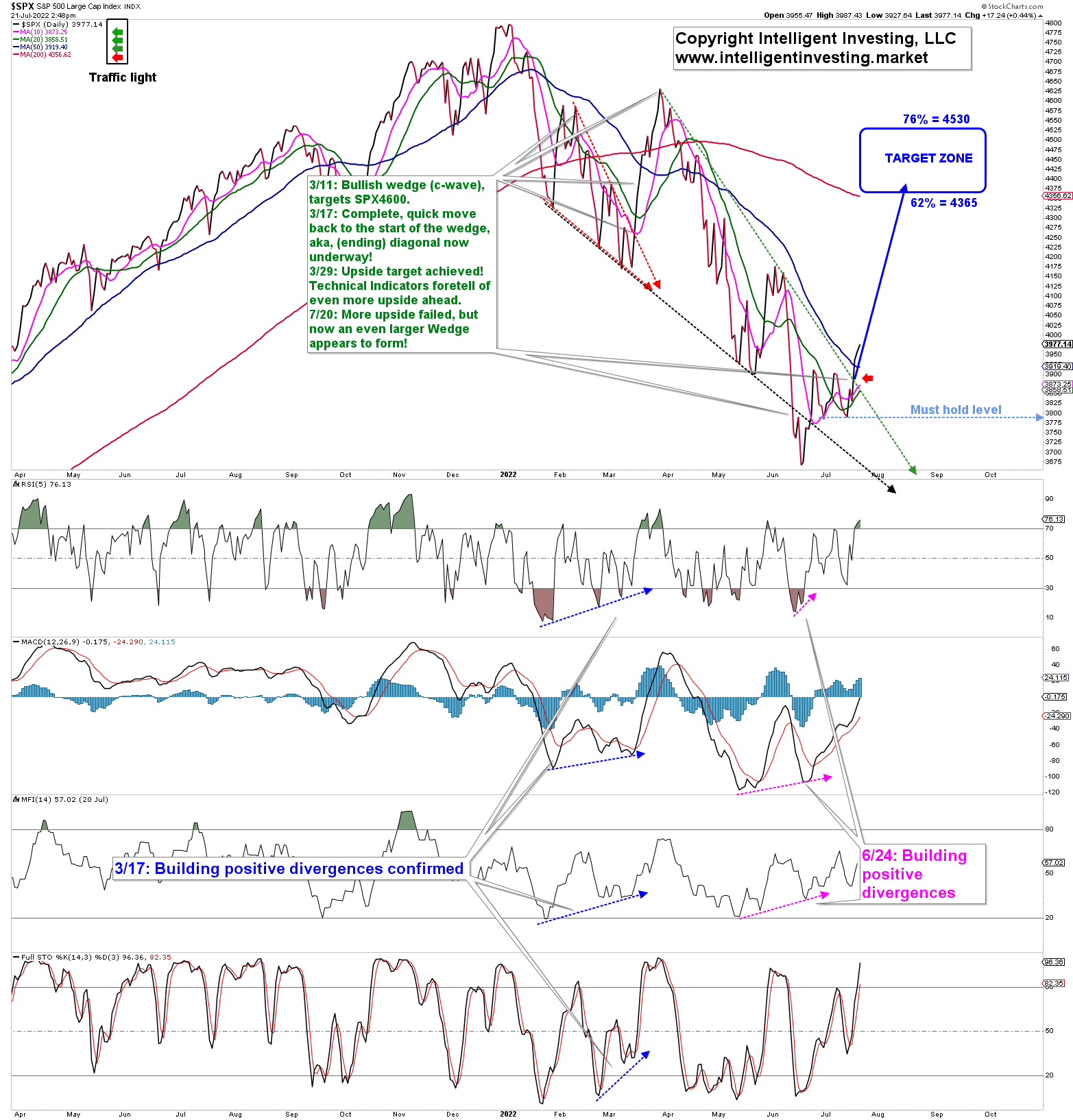Similar to the NASDAQ 100 (see here and here), the S&P 500 (SPX) has completed a potential bullish wedge pattern. See Figure 1 below.
Namely, the index broke out from the downtrend line (green, dotted) that held the upside in check since the bounce in late March 2022. That price high by itself was the projected upside target (SPX 4600+) from the smaller bullish wedge that had formed earlier this year (red dotted arrows). I alerted readers to this in early March.
Figure 1: S&P500 daily line chart with simple moving averages and technical indicators

Now that an even larger falling wedge has formed, which technically has a bullish resolution, it is time to look for higher prices over the intermediate term (weeks to months).
Similar to the NDX, reaching as high as $12,593 today and for which I said last week, “a breakout above the late June and early July bounce high levels of about $12,300 will target $12,900.”
Meanwhile, please remember comments on my original article about the NDX’s bullish wedge pattern were essentially negative and disapproving, ranging from “I guess the wedge will not be broken” to “technical analysis is worthless.” And from “giving wrong analysis without taking note of charts and fundamental analyses” to “one of the silliest articles. EWP and other oracles cannot and do not predict anything in the market.”
Now, I do not claim to get it consistently right. Nobody always gets it right because we are all only human and make mistakes. In this case, the index and my analyses proved the negative sentiment-driven opinions wrong. In other words, please do not follow the emotional hype de jour. Rather, focus and trade the setup in front of you.
The SPX has now cleared the 50-day simple moving average (SMA). The traffic light is 75% green: the index’s price is still below its declining 200-d SMA. The “traffic light” can help in one’s trading decisions. Namely, the SPX is not in a raging bull market environment where its price is >200>50>20>10d SMA, and all SMAs are rising. Trading decisions should, therefore, be more focused on appropriate risk management: smaller position sizes, tighter stops and quicker (partial) profits.
Bottom Line: The S&P 500 broke out from a sizeable bullish wedge pattern formed in March, similar to the NDX. Technically, such a breakout means the index will retrace back to the start of the pattern (SPX 4600) as it did earlier this year. Albeit, undoubtedly possible, the 62 to 76% Fibonacci-retrace levels of the decline that started from the Jan. 3 all-time high at SPX 4365-4530 are likely more appropriate initial targets. The bulls will be in serious trouble if the index moves back below recent support at SPX 3780—the must-hold level, as indicated by the light-blue-colored dotted line.
